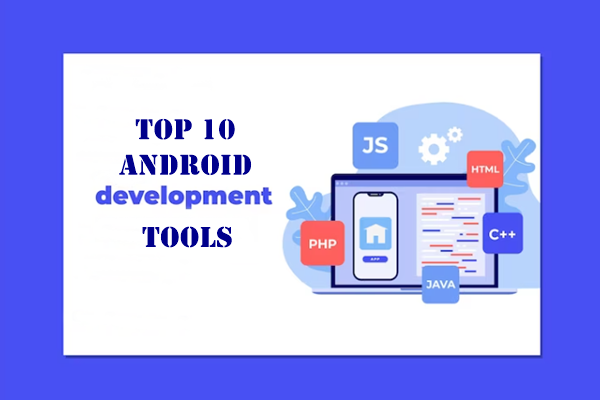The market continues to be dominated by Android mobile development. Android has a market share of over 87% in 2023, which makes it the perfect platform for creating customized applications. In contrast to iOS, which is only used by Apple devices, Android is supported by a variety of device brands. Companies all around the world are more likely to select Android for the creation of their apps since they simply want to reach more users from different socioeconomic backgrounds indirectly.
When it comes to app availability, Android also comes out on top. During the first quarter of the year 2021, there were 3,48 million applications available on the Google Play store compared to 2.2 million on the Apple Store.
As a result, the market for Android developers is in relatively high demand and is expected to remain so for some time. If you want to work as an Android developer, you have a good chance of getting employed and earning a respectable wage.
You’ve landed in the right place if you’ve decided to join the community of Android developers and are seeking the tools necessary for Android development to enable you to accomplish your objective.
Top 10 Android App Development Tools:
-
Android Studio
Google established Android Studio as the official IDE for Android (integrated development environment). It is an essential part of practically any Android smartphone development project.
The code for your app may be easily modified, tested, and debugged due to Android Studio’s drag-and-drop interface. It is open source, cost-free to use, and supported by Google and a sizable, engaged developer community.
The entire app will be designed in Android Studio for Android phones, tablets, Android TVs, Android Auto, Android Wear, Android Glasses, and other devices. Most of your work will probably be in Java or Kotlin. Also compatible with C++.
-
Flutter
With Flutter, Google has made a contribution to the field of cross-platform application frameworks. The original Sky app was designed to work with the Android operating system. In 2017, the app development framework Flutter was introduced.
According to research from 2021, Flutter is the most popular Android framework. Recent data shows that 42% of developers of Android apps use it as their primary framework.
-
Instabug
Some well-known websites that utilize Instabug for bug reporting and beta testing include Yahoo, Lyft, PayPal, Mashable, and BuzzFeed. Instabug enables beta testers and teams to submit the developer’s visuals and thorough error reports for QA and troubleshooting.
After the free trial time, Instabug’s pricing is based on things like the size of your team, the kinds of apps you use, and the length of the projects.
-
React Native
React Native is an open-source, free, cross-platform technology that was made available by Facebook in 2015. It is a tool for developing apps for all the major operating systems, including iOS, Android, the Web, and UWP. For instance, developers may construct mobile apps using React Native in addition to the native application development tools for Android.
A research firm claims that this is the best framework for building Android apps. Two of the most well-known apps developed with React Native technology are Airbnb and Discord.
Utilizing the native building blocks of the system, React Native enables developers to design user interfaces (UIs). This is made possible via a special type of JavaScript created by the React team. When an Android machine is opened, React Native apps seem and behave exactly like the real thing since they employ native Android construction components.
-
Firebase
Mobile apps rely on server-side processing for a variety of functions, including user authentication and data synchronization between devices. The issue is that few ISVs have the knowledge required to build such a server. Thankfully, there are numerous BaaS platforms (backend as a service) accessible right now. A system like this is Google Firebase.
A few useful capabilities that can be accessed with Firebase without paying money are analytics, crash reports, user authentication, and cloud communication. Its freemium options also include a real-time NoSQL database, static website hosting, and file hosting.
-
Xamarin
Microsoft supports the Xamarin application development platform. Since they have access to features like Android’s Multi-Window, developers can use this framework to create applications that perform similarly to their native versions on other platforms. Developers can share up to 90% of their code between the iOS and Android platforms by using Xamarin Forms.
With the use of this excellent software, developers may construct programs with native user interface features that can then be customized to match the demands of their target consumers. Native Performance optimizes code for the platform’s hardware, whereas Native API Access gives full access to functions using the platform’s special capabilities.
-
Stetho
Stetho is an Android debugger created by Facebook. It is an open-source, free platform that works with the Chrome Developer Software that is already included in desktop browsers. Stetho features response assistance JSON, HAR export of traces, and network inspection for viewing photos in advance.
-
GameMaker: Studio
For those creating their first Android game, Studio is a fantastic choice. This is the ideal choice if you’re just getting started with Java and Android and wish to learn how to develop a game. The platform offers you everything you require, requiring very less programming or coding on your part to create a 2D game. Additionally, it features a drag-and-drop user interface, making it very simple for new developers to begin working with Android.
-
Fabric
This was utilized by numerous large corporations, including Twitter, Uber, and Spotify while creating their mobile applications. That is a serious test for a technology like this on its own. In fact, Google acquired Twitter’s Fabric in January 2017. The platform provides a number of testing kits for developers as well as marketing and advertising kits. With those elements, it is very simple to make sure that the app is user-friendly and suits the target market.
-
Android Debug Bridge
A command-line tool called the Android Debug Bridge serves as a “bridge” between Android devices and other computers, greatly simplifying development, debugging, and quality assurance. This tool may be found in Android Studio.
After connecting an Android phone to the development PC, the developer can perform the necessary adjustments by inputting terminal commands.
Conclusion
Now more beneficial tools are available to speed up the development process as Android application development businesses continue to expand and evolve. The attributes of the goods and the buyer’s preferences are typically what matters while selecting the most suitable app development tool.




